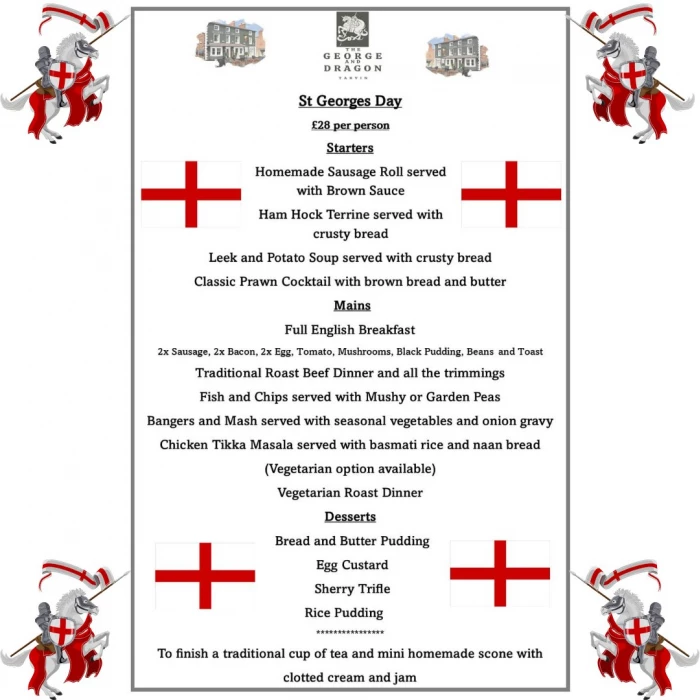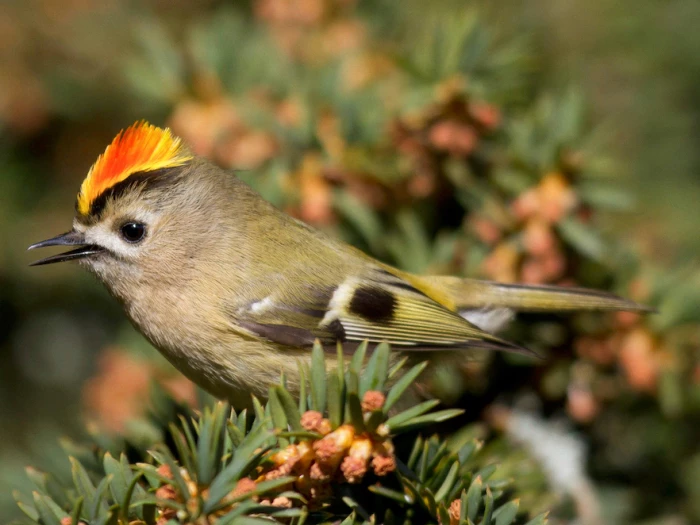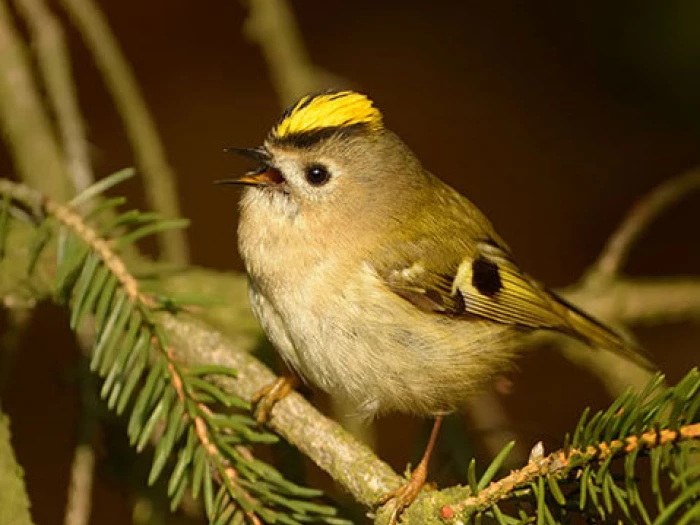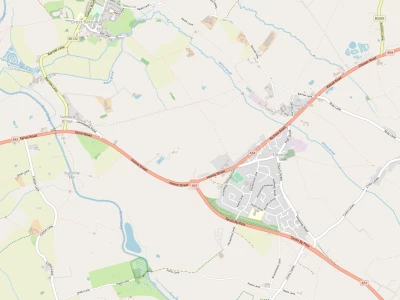



![TWT Plant Sale 2023 ba890fe3-5f67-4cbf-896e-5fdc0bdca5ee[374045]](https://l1.tm-web-01.co.uk/lib/bn8-Q752422.webp)

Birds in Tarvin Community Woodland.
The Goldcrest
(Regulus regulus)
Click on the birdsong link to listen to the song of the Goldcrest in a separate tab while you read this article: Goldcrest song
The goldcrest (Regulus regulus) is a very small songbird, whose colourful golden crest feathers gives rise to both its English and scientific names (the scientific name, R. regulus, means king or knight). Additionally, it being referred to as the "king of the birds" in European folklore, despite it also being the smallest of all the European birds. Both Aristotle and Pliny recount the legend of a contest among the birds to see who should be their king, the title to be awarded to the one that could fly highest. Initially, it looked as though the eagle would win easily, but as he began to tire, a small bird that had hidden under the eagle's tail feathers emerged to fly even higher, thereby claiming the title. Some sources consider that this legend describes the wren as being the "king of the birds". However, with their fiery crown and because of the legend's reference to the "smallest of the birds" becoming king, it seems more likely that the goldcrests were the original bearer of this title, especially since the goldcrest 's old name was the "gold-crested wren".
Apart from the bright crest colour (yellow with an orange centre in the male, and entirely yellow in the female), the sexes are very much alike, although the female may have very slightly paler upper-parts and greyer underparts than the adult male. The flight is distinctive, consisting of whirring wing-beats with occasional sudden changes of direction. Shorter flights while birds are feeding are a mix of dashing and fluttering with frequent hovering. They move restlessly among foliage, regularly creeping on branches and up and down trunks – indeed, very much like a wren! Goldcrests feed in trees, frequently foraging on the undersides of branches and leaves. They are almost exclusively insectivorous, preying on small jointed-leg creatures with soft cuticles, such as springtails, aphids and spiders (and will even catch flying insects while hovering). They will also feed on the cocoons and eggs of spiders and insects, and occasionally may take pollen.
They breed in coniferous woodland and, increasingly, in gardens, building their compact, three-layered nests on tree branches. Ten to twelve eggs are incubated by the female alone, while the chicks are fed by both parents. It is quite common for a pair to produce a second brood. Outside the breeding season, small groups of goldcrests maintain exclusive winter-feeding territories, which they will defend against neighbouring groups. As they roam around their territory, they will often join loose flocks of other wanderers such as tits and warblers. The goldcrest is one of several small songbird species that survive freezing winter nights by undergoing a type of hypothermia (perhaps by as much as 10C (18F) below their normal body temperature) in order to reduce overnight energy consumption. However, in freezing conditions, it may be that, for the tiny goldcrest, the energy economies of induced hypothermia may be insufficient to counterbalance the negative effects of hypothermia including the energy required to raise body temperature back to normal at dawn. To overcome this, they will use behavioural strategies such as collective roosting in dense foliage or in snow holes to survive winter nights. For a bird with such a tiny body mass, this is a very significant problem – in the north of its range, it has been calculated that even when goldcrests are huddled together, they can each burn off fat equivalent to 20% of their body weight to keep themselves warm.
Quick Links
Get In Touch
TarvinOnline is powered by our active community.
Please send us your news and views.



